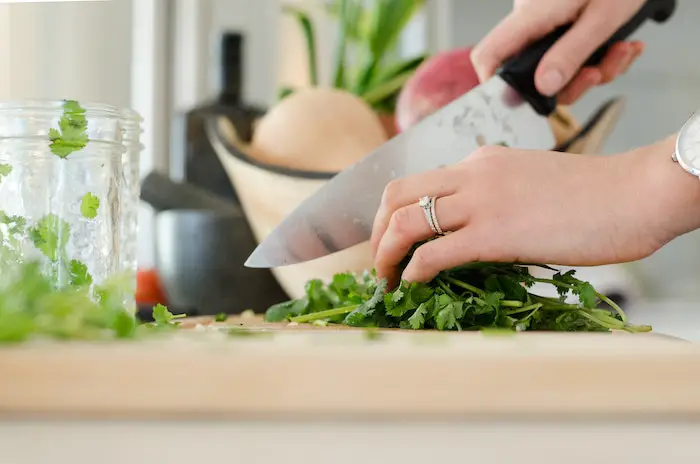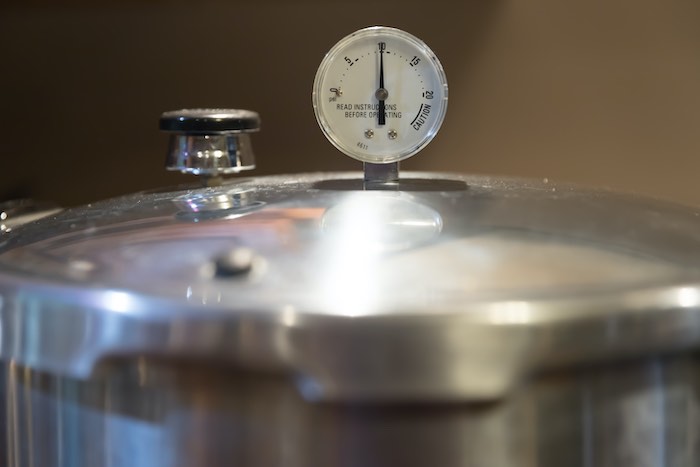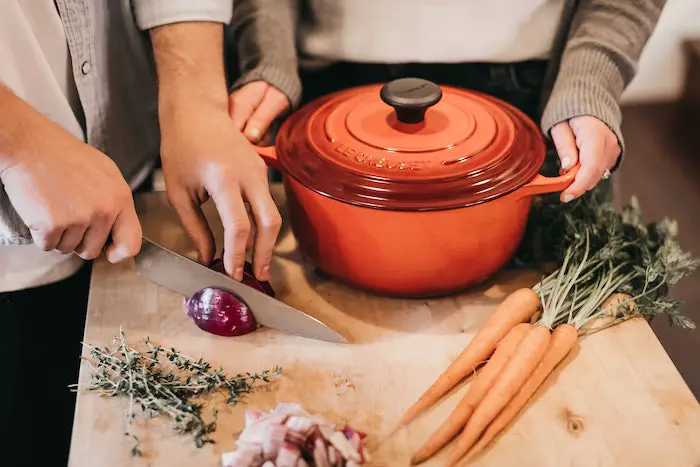Once you’re past the basics of cooking, an entire world of pots, pans, cutting boards, and especially knives, opens up. The caliber of your tools can really define the quality and ease of cooking, and the most important tool in the kitchen is the knife.
KitchenAid is a well-known name in the cooking accessories game and is arguably most well known for their spectacular stand mixers. But what about their knives? Are KitchenAid knives good?
KitchenAid knives are a marvelous choice for home chefs and professionals. They are reasonably priced, available in a variety of different styles and sizes, and most important of all, hold an edge well.

It’s one thing to say that KitchenAid knives are good, but it’s another to know why they’re good! Choosing a knife or a knife set can be an extremely personal decision, so before you decide on a KitchenAid knife, read on to discover what makes these blades as desirable as they are.
Are KitchenAid Knives Good?
A lot of chefs will tell you that the quality of a knife depends a lot on personal preference, but there are some basic points that determine whether a knife is good. The most important features of a knife are:
- Sharpness
- Durability
- Usability
When all of these facets are considered, it can be determined that KitchenAid knives are truly good knives. Let’s look at where KitchenAid knives excel!
Sharpness
KitchenAid knives are crafted from German stainless steel, which makes for an incredibly sharp edge that stays sharp for a long time. This stainless steel is also easily sharpened, meaning that even if the edge wears down eventually, you can get it back to its original sharpness in seconds.
Durability
The stainless steel that the KitchenAid knives are crafted from is incredibly durable, and can even hold up to repeated trips through the dishwasher. The blade is secured to the handle with steel rivets, ensuring that the handle won’t come detached, no matter how hard the job.
The handle itself is made from durable, nonporous fiberglass. This material will hold up and last quite a long time, but it isn’t as pleasant to look at or hold as a properly sanded wooden handle.
Fiberglass has the added benefit of not soaking up smells or liquids like a wooden handle, which can be a big plus when working with raw meat.
Usability
KitchenAid knives are suitable for amateur and professional chefs, making them usable for home kitchens and restaurants both.

Many KitchenAid knife sets come with a high-quality wooden or steel knife block and sharpener included, which is great for those who are just dipping their toes into kitchen tool purchasing.
With the exception of some of the smaller knives, users report that the KitchenAid knives are comfortable to hold, with no hand cramps cropping up even after long meal preps with their knife.
Are KitchenAid Knives Sharp?
Being crafted from stainless steel, KitchenAid knives are sharp. Like all knives, their edge will wear with time, but can be easily sharpened again with a knife sharpener.
KitchenAid knives are both sharp at the time of purchase, and easily returned to their peak when sharpened. Sharpening a knife may be a foreign concept to a lot of new cooks, so consider the four types of knife sharpeners before you try to sharpen your own knives
The four main types of sharpeners are:
- Sharpening Steels- These metal rods are actually used for honing a blade between sharpening, and not sharpening itself. They’re a great quick fix, but won’t fix a dull edge in the long term.
- Sharpening Stones- Also known as whetstones, these stones have been used to sharpen everything from a broadsword to a paring knife. They come in all shapes and sizes, but for kitchen knives, are usually small enough to be handheld.
- Manual Knife Sharpeners- Small enough to be portable and easy enough to use when in a hurry, manual knife sharpeners can get your KitchenAid knife back to sharpness in a flash. Inside the sharpener are two sharpening plates, set at an angle, that you will drag your knife across.
- Electric Knife Sharpeners- Used in restaurant kitchens and prized for their speed, electric knife sharpeners function similarly to their manual counterparts. Instead of repeatedly dragging your knife over the sharpener, the electric variety does all the work for you.
Is KitchenAid A Good Brand For Knives?
KitchenAid is a moderately priced knife brand and is the perfect brand for home chefs. Some restaurant chefs also swear by KitchenAid knives, but they are most popular in home kitchens.
KitchenAid is a trusted brand, and as such, their products have to be high quality. Even though they are primarily used in home kitchens, KitchenAid knives are still some of the most popular knives on the market.
What Are The 3 Most Popular KitchenAid Knives?
The three must-have knife varieties are the paring knife, chef’s knife, and serrated knife. Having so many types of knives may seem like a waste of space and money, but once you’ve cooked for a little while, you’ll realize how many types of knives are needed for even the most simple recipes!
KitchenAid has several iterations of these knife types, but here are the most popular:
- KitchenAid Forged Paring Knife- Made from high carbon German steel, this paring knife has rave reviews.
- KitchenAid 8-Inch Forged Chef’s Knife– The chef’s knife is truly the workhorse of the kitchen. This knife style can do it all, and the KitchenAid 8-Inch Chef’s Knife does it even better than most.
- KitchenAid Forged Serrated Knife– If you’ve ever struggled to cut a loaf of crusty bread, then you need a serrated knife! The KitchenAid Forged Serrated Knife can take on even the crumbliest breads.
Related Questions
Are KitchenAid knives dishwasher safe?
Yes, the stainless steel KitchenAid knives are dishwasher safe.
Where are KitchenAid knives made?
KitchenAid lists the country of origin of their knives as China.
Are KitchenAid knives stainless steel?
Yes, they are high-carbon German stainless steel.
See Also:
4 Best KitchenAid Hand Mixers To Buy
KitchenAid Cart-Style Charcoal Grill Review – Read This Frist!
4 KitchenAid Countertop Oven Reviews
KitchenAid Juicer Attachment Review: Is It Worth To Buy?
Hammered Vs. Non-Hammered Knives


